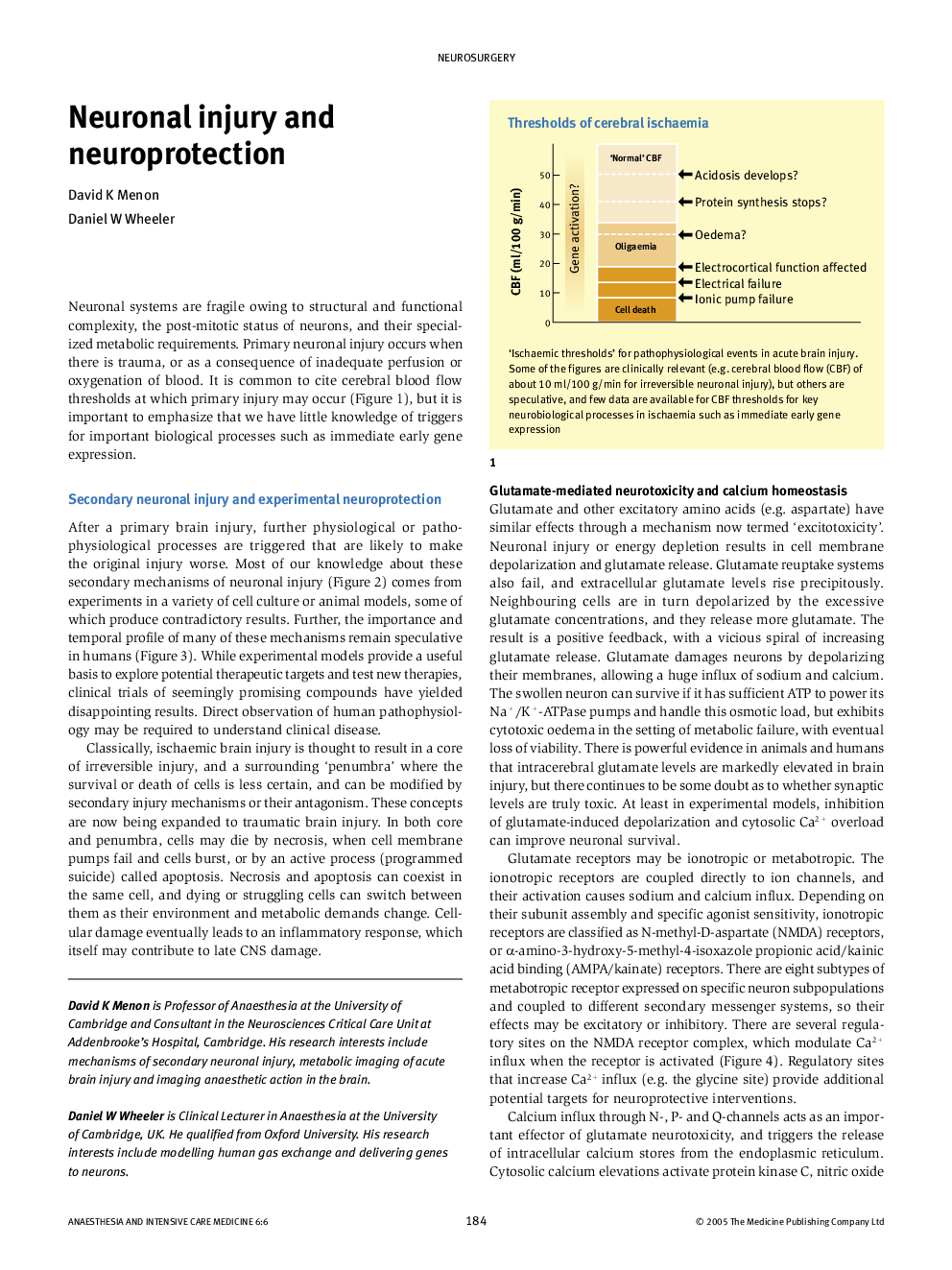| Article ID | Journal | Published Year | Pages | File Type |
|---|---|---|---|---|
| 9089876 | Anaesthesia & Intensive Care Medicine | 2005 | 5 Pages |
Abstract
Cerebral ischaemia is responsible for many deaths and causes an enormous amount of disability. Neurons are particularly susceptible to ischaemic injury because of their high metabolic rate and associated oxygen and energy requirements, and because brain repair mechanisms in humans appear to be absent or very limited. Primary neuronal injury may result from focal or global ischaemia, or traumatic brain injury. After injury, chains of physiological and pathophysiological events occur (e.g. inflammation) that cause secondary brain injury. This article describes these processes, and the efforts that have been made to intervene to improve outcome after cerebral ischaemia. Although the benefit of optimizing oxygenation and controlling intracranial pressure are beyond doubt, many potentially neuroprotective compounds that have been studied have been unsuccessful, despite promising results in experimental animal models. The authors discuss the reasons why this may be, and the growing realization that not all the processes previously thought to cause secondary injury are deleterious after all, and that a subtle interplay between them may offer some degree of neuroprotection or even brain repair.
Related Topics
Health Sciences
Medicine and Dentistry
Anesthesiology and Pain Medicine
Authors
David K Menon, Daniel W Wheeler,
